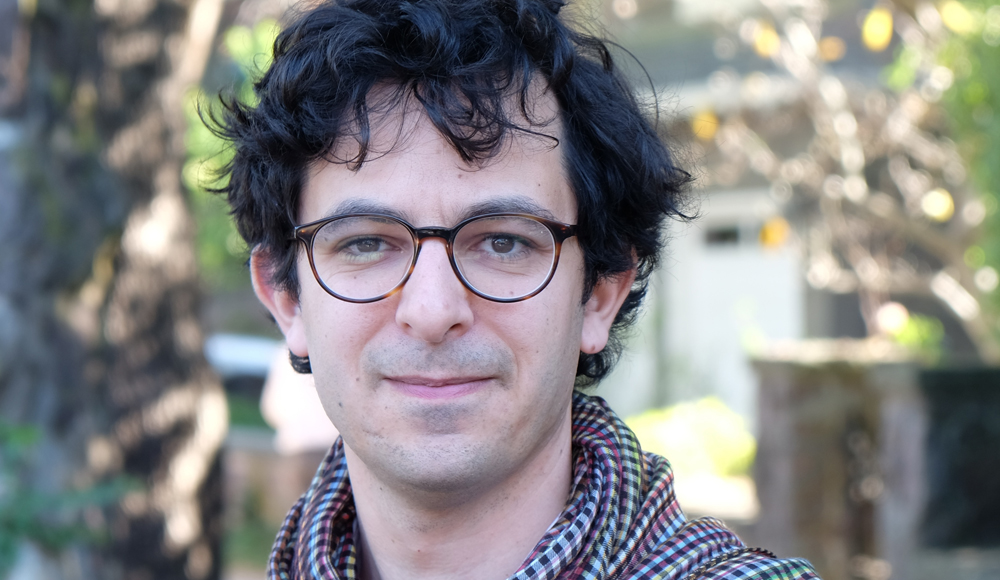
San Francisco-based start-up yerdle helps users give and receive things for free by asking the question: “Why shop when you can share?” The online platform works off of a credit system; you earn credits by giving things away and credits can be used to “purchase” something you want. Yerdle fits nicely into the sharing economy model as a means to cut down on superfluous consumerism while fostering a community of trust and generosity. Instantly intrigued by this innovative idea (recently launched in NYC), we reached out to co-founder Carl Tashian to ask about the yerdle philosophy:
What sparked your interest in sharing practices? Did you participate in other sharing platforms before imagining yerdle?
Tashian: I worked at Zipcar for five years and it was my first job out of school. I built a lot of the technology there, and that really got me interested in the sharing space and specifically how we can do more with less. I didn’t own a car, so I used the service a lot and I saw how it changed our members’ habits. When you own a car, the car easily becomes the default answer to all of your transportation problems. Zipcar forces you to decide: should I bike? walk? take the subway? or take a Zipcar? Personally, I used my bike primarily and Zipcar when I needed it.
Later on, I co-founded a bartering network for creatives in NYC called OurGoods, with Caroline Woolard, Jen Abrams, Louise Ma, and Rich Watts. Originally, we were interested in helping artists connect with each other and get things done without the use of money. OurGoods turned out to be a kind of dating site for great collaborations. The focus is on the project instead of the person, and it’s a great lens for glassing the creative landscape.
I did find, however, that barter could lead to some pretty complex negotiations. When I met my Andy Ruben and Adam Werbach, my co-founders at yerdle, I liked that they were looking at gift economies. It’s so simple! It turned out to be slightly too simple, but our credit system is a great middle ground. People want to feel that they got something for what they gave away, and credits help with that.
Yerdle’s mission is said to be to “reduce the durable consumer goods we all need to buy by 25%.” Where did this metric come from?
Tashian: If you look at the makeup of a typical big box store, at least 25% of what’s sold there is a candidate for reuse.
You mention trust and reciprocity several times on the website and in interviews — which are big buzzwords in the sharing community. How is trust fostered amongst yerdle users? How are users encouraged to “trust” each other through something as detached as an app interface?
Tashian: Trust is a big focus for us. There isn’t one solution for it. Great experience design helps. Establishing an atmosphere of trust through social norms helps. Bringing legitimacy to the transaction. And, of course, real-world verification mechanisms. I don’t think we’ll ever stop experimenting with this–looking for the balance that will keep the service easy to use, transparent, and safe.
To what extent does yerdle attract an environmentally-friendly user? Is it a means to reduce unnecessary production of goods or simply a way to obtain these goods for free?
Tashian: It’s definitely both. And it’s about living smaller — cleaning out that closet or garage that’s full of stuff you don’t use and getting something in return. The environmental benefits are not a primary reason to use yerdle, but they are inherent in the model. Ideally, yerdle will grow to a point where we can encourage manufacturers to make better quality, more durable products because they know there will be a big market for reuse. That’s powerful. Patagonia is a great example. They already benefit from this, and we think manufacturing will move more toward their model.
What role does community play in the use of yerdle – does it bring people together or is it a platform for swapping goods?
Tashian: Our members love the community element of yerdle. They love talking to each other, learning each others’ stories, learning the stories behind the items they’re exchanging us. We’re looking forward to building in many more social and communication features in yerdle – it’s very exciting. And overall, the community grows out of the shared values of reuse, saving money, living smaller, and preventing needless waste. We do a lot of shipping with yerdle, so it’s not as intimate as OurGoods, but it’s more convenient. So, that’s another balance we have to strike.
You have mentioned in previous interviews that yerdle aims to develop a way for users to purchase credits. How do you plan to value a credit? Does this erase yerdle’s claim of generosity-based sharing?
Tashian: We may sell them down the road, but honestly that is too far off for me to comprehend right now. Meanwhile, the only way you can get credits is by giving something away on yerdle or referring your friends.